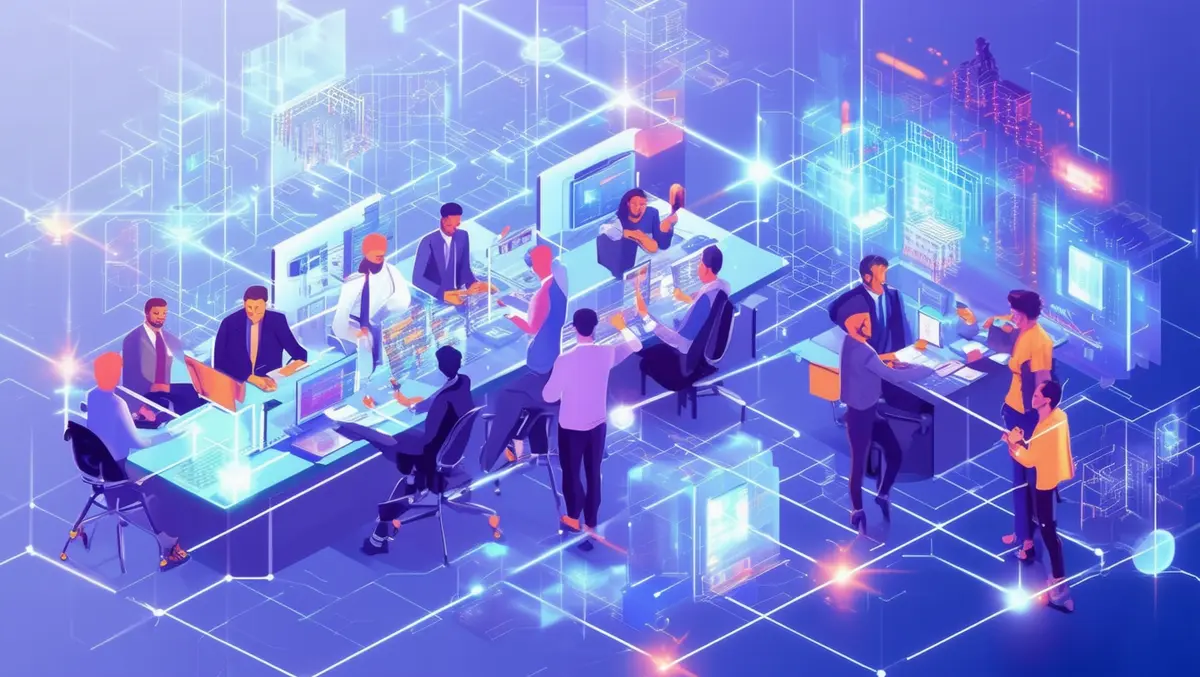
From silos to systems: the rise of the Employment Operating System
How many SaaS subscriptions is your business juggling? For the average small-to-medium enterprise (SME), it's over 200. Yep, that's right - 200 different software applications just to keep things running smoothly. And when it comes to managing employees, it gets even more complex with Employment Hero's research showing that most companies rely on 4 to 7 different systems for their HR basics. Add up those SaaS fees, and the total cost is eye-watering, with users also struggling with fragmented systems, vendor overload and complex integrations - if integration is even possible.
Within multiple domains - the answer has been to consolidate. Ecommerce sites are morphing into marketplaces; fitness apps are transforming into wellness hubs and banks are evolving into fintech super apps. Should HR follow?
Employment operating systems (eOS) explained
The concept of an operating system (OS) is familiar territory for most. At its simplest level, an OS is the software that enables a computer's essential functions - including scheduling tasks, executing applications and controlling peripherals - to work in harmony. The result is the efficient use of digital resources in a way that improves productivity.
But if it works so well for computers, the question begs: why haven't we applied this thinking to other areas of business? Enter the 'Employment Operating System' (eOS) - a brand new concept that brings together all HR-related functions under one digital roof.
A unified experience
Historically, business functions have existed in silos, with each team purchasing software that meets the needs of their particular team. This fragmentation has been responsible for administrative headaches, including the need to manually input shared data between systems, constantly managing software updates and the pressure of managing multiple passwords and permission levels. It can also lead to data inconsistencies, which increase security risks.
Using an EOS, HR functions are seamlessly integrated, and employees can manage every aspect of their career through one digital portal that integrates every employment process into one platform. Onboarding, ongoing learning, career development, payroll and even exit interviews are handled centrally - saving time and resources and enabling companies to gain deep insights into workforce dynamics. No more logging in to multiple platforms for leave requests or performance reviews - with the ability to quickly and easily identify and apply for internal job opportunities using AI-enhanced CV creation and career path suggestions.
In the same vein, employers can leverage an eOS to streamline talent acquisition (including using SmartMatch's AI functionality to identify the most suitable candidates; and automatically screen CVs) as well as manage the entire employee journey including leave, timesheets, payroll and even employee engagement, including peer-to-peer shoutouts and happiness surveys.
For companies who have traditionally struggled with payroll headaches, eOS offers instant ROI by ensuring payroll runs smoothly - automating statutory contributions and running error checks and warnings that eliminate the chances for human error.
All about the data
Importantly, an eOS also translates into a complete and unified dataset. With all HR data pooled into a single platform, companies can generate more accurate reports and make well-informed decisions. Gone are the days of piecing together reports from disparate systems - now, HR managers can track performance metrics, monitor employee engagement and assess the effectiveness of training programs all from one single source. This unified approach also enables predictive analytics, offering insights that would be difficult or impossible to glean from fragmented systems. This is especially critical for making data-driven decisions in real-time, which can boost everything from employee satisfaction to overall business productivity.
Leveraging the power of AI
Modern eOS like Employment Hero also integrate AI, such as a custom AI-powered chatbot (Hero AI) which has the ability to answer compliance and employment related questions employees may have. Functioning like a personalised Chat GPT designed specifically for your business, the technology will scan all of your employment documentation to provide a precise, accurate answer to your team.
More than just efficiencies
Although survey data shows businesses who switch to an eOS experience a 291% return on investment within three years and benefit from significant operational efficiencies, the shift to eOS isn't just about improving operations; it's about laying the groundwork for a stronger workforce and more adaptable, resilient economy.
When companies streamline their operations and reduce costs - sometimes by as much as 50% - they can reinvest in their people and processes. This creates a ripple effect, strengthening businesses and contributing to a more robust economy that benefits the entire nation.
In a world where fragmented HR software can drain resources and hinder productivity, the Employment Operating System is a much-needed remedy. By centralising all HR functions, these systems are set to redefine how businesses engage with, nurture and grow their most valuable asset - their people - to play a holistic and strategic role in their organisational growth.
More information on Employment Hero here: